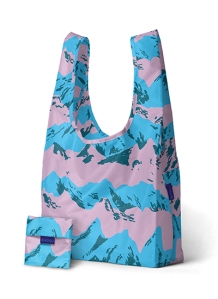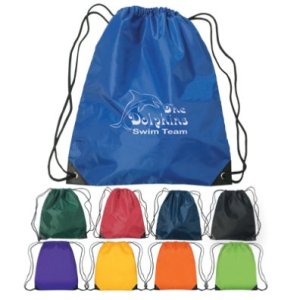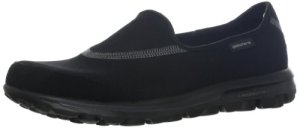 Whether you’re packing for an urban hostel tour or a remote backcountry hike, there are a million reasons why packing light will save you time, energy, and hassle.
Whether you’re packing for an urban hostel tour or a remote backcountry hike, there are a million reasons why packing light will save you time, energy, and hassle.
For Josie at Travelista, it’s all about flexibility:
Packing light means you will not be horrified when you realize that the cute little pensione you’ve booked in Florence is on the 5th floor of a building with no elevator.
Going light is easier said than done. Some travelers trim down their pack size by simply bringing less, while others scour shops for the lightest possible gear to meet their needs.
Though I’m planning to through-hike the Pacific Crest Trail next year, I’m also heading to (mostly western) Europe soon for a three-month trip on the Busabout circuit. Traveling by bus will mean a lot of walking, and lots of time spent carrying my bag along unfamiliar streets to new hostels. Keeping my bag light and manageable is key to staying happy and safe. I don’t plan on trimming down to an extreme ultralight pack, but I have learned a few tricks that could save anybody some precious ounces:
1. Expand and Contract

from baggu.com
Over the course of a long trip, your storage needs are going to change. One day you may be carrying a packed lunch, a raincoat, or an extra water bottle, while other days you’ll want to leave all that extra weight back at your hostel and move unfettered. Instead of packing an extra purse or backpack, consider super-light sacks and bags that fold up tight.
Caroline over at HerPackingList recommends a stuffable daypack, but, depending on your needs, you may find that a simple compactable grocery sack, like a baggu shopping tote, does the trick. Larger-size baggu totes can be worn as open-top backpacks–particularly useful for short treks to the beach.

A simple drawstring backpack might be all you need. Picture source.
I can also recommend drawstring backpacks–available at most dollar stores. They don’t offer much security from thieves*, but if you need an easy way to carry a scarf or raincoat on unpredictable weather days, they’re an easy option that packs away tiny when not in use.
*As a general rule of thumb, never put valuables in any back-worn daypack.
2. Just one pair of shoes
Shoes seem to be the Achilles heel (heh) of any effort to pack light. Even those who are religious about weighing every item in their pack may find themselves bargaining that that one pair of high-heeled sandals or spare running shoes deserves to be in their pack just in case or just because. Resist temptation! You only have one pair of feet, so bringing two pairs of shoes means you will always be lugging at least one pair on your back. One simple, comfortable, understated, lightweight pair of walking shoes is all you need to travel with.
My choice for my upcoming trip is these Skechers Go Walk slip-ons. They’re understated enough to be welcome in museums and sacred places, and comfortable enough to handle long days on cobblestone streets or the occasional short alpine jaunt. They seem durable enough for the length of my trip, but I’ll keep you updated on that front once I put them through the ringer.
An exception to the one-pair-of-shoes rule: You might also throw in a pair of Flipsters or other lightweight sandals to use as shower and beach shoes. These will be useful for times when your regular shoes need to air out. You can also simply buy a cheap pair of flip-flops at your destination–It’s one more souvenir, and one that you’ll actually use!
3. Everything matches everything
Ladies, you know that shirt you love? The tricky one that you can’t really wear with a skirt, and which is thin enough to require a camisole underneath, and which looks best when belted? I’m sorry, but you’ve got to leave that shirt behind. Every piece of clothing you bring has to be opaque enough to be worn on its own and versatile enough to be paired with every other article of clothing you bring. You’ll get a lot more day-to-day outfit variety this way, and you’ll never be stuck with only ridiculous-looking options when you’re getting close to laundry day.
My packing list includes one pair of black pants, one black skirt (long enough to be worn as a mini dress), and a pair of black shorts that are comfortable enough to sleep in. Keeping a monochromatic bottom half makes selecting tops a snap! One t-shirt, one dressier top, and one comfortable tank are all I’ll need to make nine different outfits. Throw in a cardigan, a lightweight dress, a camisole, a sarong, and an extra tee bought somewhere as a souvenir, and suddenly I’ve got a whole wardrobe forming without an enormous investment in packing space.
4. No “what if” items
What if your backpack falls apart and you need a roll of duct tape to build a whole new one from scratch? What if your journaling pen dies and you need five spares? What if you run out of clean underwear or socks or shirts in a place where laundry is 15 euro per load? What if?
“What if” is the absolute heaviest thing to pack on any journey. You’ve got to be brave, and leave it behind. Yes, some items are more difficult to find or more expensive in some parts of the world than they are at home, and yes, you might be grateful for that roll of duct tape if your shoes explode while you’re hiking the Cinque Terre. Is it worth lugging a few pounds of “what if” weight through your entire trip just to avoid hypothetical discomfort on one or two days? No! It isn’t! Except for first aid items, medications, and other health-and-safety-related tools, you can always ask fellow travelers or local strangers for help if there’s something you desperately need to borrow–you might even make a friend in the process! Bring an extra twenty bucks in cash as your all-purpose “what if” item, and leave the duct tape at home.
5. Take advantage of amenities
Before your trip, research your accommodations and consider the amenities they offer. Will most of your hostels have kitchens, rental linens, towels, and book exchanges? If so, you can trim that extra gear from your pack.
The towel: Douglas Adams’ advice notwithstanding, paying 1-3 euro for the use of a fresh towel is much nicer than toting your own and waiting for it to dry each day. There are plenty of packable towel options, but in my experience they aren’t absorbent enough to be worth the effort. For hostels without towel rental, I bring a small microfiber washcloth paired with a sarong (which works double-duty as a beach cover-up, picnic blanket, headwrap, scarf, emergency sling bag, emergency dress, shawl, and all-purpose modesty muumuu). I squeeze the extra water out of my hair in the shower, use the microfiber wash cloth to get cursorily dry, then wrap up in the sarong for mirror time or the walk back to my dorm room. The wash cloth wrings mostly dry if I need to use it again, and the sarong, though cotton, is thin enough that it never stays damp for long.
Sleeping gear: Travel blankets and pillows are fairly common and, in my opinion, not at all necessary. Your hostel bed will have some kind of linen on it, and you can always ask for another blanket if what you’ve been provided with is dirty or not warm enough. If you’d rather not take the risk of sleeping among hostel insects and germs, opt for a sleep sack with enough headroom to cover the pillow, or a simple bedsheet sewn closed. I made mine by buying a set of microfiber sheets on sale at target (check their dorm-style bedding at the beginning and end of the school year for deals). Simply fold the flat sheet in half and sew two of the three open sides closed**. Most sets also come with a pillowcase. The result is lightweight, easily stuffable, and smells like home.
**If you get stuck buying a full sheet set for this project, like I did, you can use a seam ripper to pick the elastic out of the fitted sheet and use the extra fabric for stuff sacks or a spare sleep sack.
Check out these ultralight packing lists for more inspiration:
Jeremiah Rogers (an 18 liter pack for long-term hotel-based traveling)
Erik the Black (He’s a PCT through-hiker with an ultralight ethic)
T.D. Wood (Author of the REI guide to ultralight packing)





